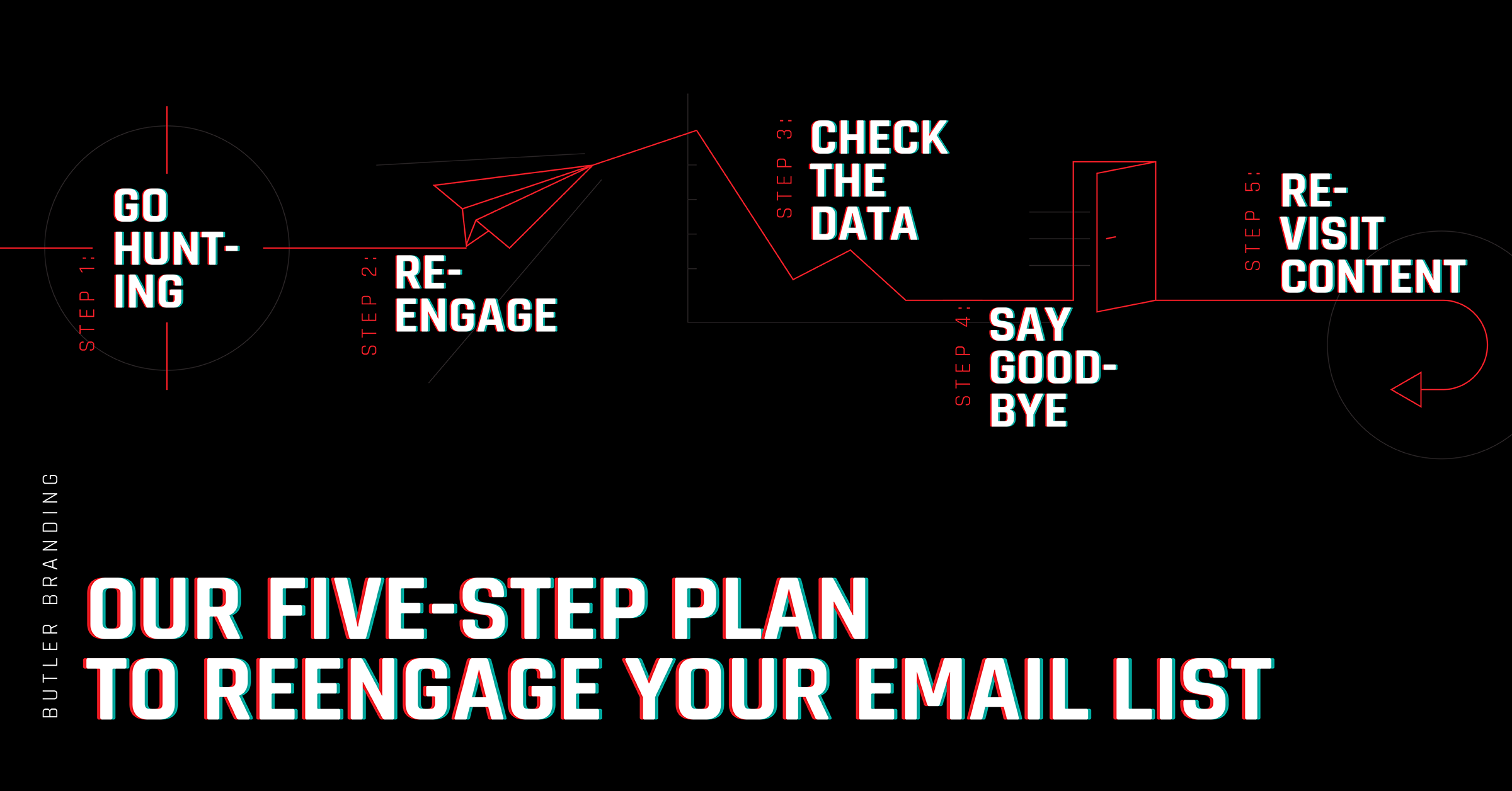It happens to the best of us. Our once faithful email subscribers fall off the wagon, and our engagement rates begin to dwindle. Don’t fret, not all hope is lost! We’ve put together a simple Five-Step Plan to Re-engage your email subscribers and refresh your list.
Step 1: Go Hunting
Log into your email marketing tool or CRM and identify any subscribers who haven’t opened any of your campaigns in the last 12 months. Your re-engagement strategy won’t apply to active email subscribers, so you’ll want to segment a list of just the disengaged subscribers. This new list will receive a re-engagement campaign tailored to them.
Step 2: Develop Your Re-engagement Campaign
This campaign should be a pull-out-all-the-stops, best content, best offer kind of email because it is the last chance you have to impress. Some re-engagement campaigns create an offer, offer multiple subscription options for people to select only the content they wish to receive. For example, you can send a special offer as thanks for subscribing or a thank you note actively asking for their resubscription or feedback on our content.
Remember that this is not a sales/marketing email. Focus on the list hygiene aspect before we start going down the road of lead generation. We need to clean out the uninterested subscribers, so we’re left with a list of warm subscribers. You’ll need to put your best foot forward here as this might be the last chance we get to connect with these subscribers.
Step 3: Check The Data
Once you’ve sent your re-engagement campaign, check out your reports. See who has re-engaged or taken the action you wanted them to. If even 5% of subscribers have engaged, well done! Hopefully, that 5% will be active again in the future. Don’t be discouraged to see your list of thousands widdle down to a few hundred. It’s better to have 200 active subscribers than 10,000 inactive ones.
Step 4: Let the Lost Souls Go
If these subscribers don’t open or click on the re-engagement campaign, it’s time to say goodbye. It may seem like you’re getting rid of potential customers or “hard-earned signups”, but the reality is that they’re likely doing more harm than good by hanging around.
While one benefit to cleaning up this group is that you’re saving money by not sending to people who aren’t interested, the main upside is that you’re removing the deadweight from affecting the performance of the rest of your list. The engagement level of your list as a whole will improve, which you should see reflected in your open and click-through rates.
Step 5: Revisit Your Content
As they say, prevention is better than the cure, so it’s time to up your game and give subscribers less reason to go quiet in the first place. In particular, the first 90 days following signup are critical, so it’s very important to focus on whether you’re communicating effectively with new subscribers in this courting period. Since some of these subscribers haven’t seen some of the content we published before they signed up, there is no need to reinvent the wheel here.
Ask yourself: What are they expecting? What are you communicating? Are you being a good host? You can use autoresponders to send a welcome series of emails, or post-signup follow-ups to automate this process. But, be sure you are adding value to the people who have chosen to join your list. Your subscribers will be more fruitful in the long run if they’re well nurtured from the start.
If you think it’s time to take your email marketing to the next level, we can help! Butler’s team of experts are ready to help you put together the digital marketing plan you need to be successful.





